Overview: The softer than expected US CPI drove the dollar and interest rates lower, while igniting strong advances in equities, risk assets, commodities, and gold. Calmer market conditions are prevailing today, and we suspect that in the run-up to the FOMC meeting, a broadly consolidative tone will emerge. The dollar is mostly softer, but within yesterday’s ranges. Only the New Zealand and Canadian dollars among the G10 currencies are softer. Emerging market currencies are generally firmer, led by the recovery of the Hungarian forint on the political deal struck yesterday. The Mexican peso and Turkish lira are the exceptions. Asia Pacific equities generally rose, led by Taiwan and South Korea. Europe’s Stoxx 600 is cutting yesterday’s 1.3% gain nearly in half, while US futures are also a little softer after yesterday’s big run-up. European bonds are selling off and yield are mostly 5-9 bp higher. Sweden’s benchmark has jumped 15 bp after a 1% jump in its CPI. UK Gilts are outperforming, up a single basis point on lower-than-expected CPI figures. The 10-year US Treasury yield is hovering around 3.50%. Gold is consolidating its nearly $30 an ounce rally seen yesterday on falling yields and a weaker dollar. January WTI is advancing for the third consecutive session after falling every day las week. It is pushing a little above $76. US natgas is snapping a five-day rally and giving back all of yesterday’s 5.3% rally. Europe’s natgas benchmark is off 3.8%. Iron ore eked out a small gain after falling for the past two sessions. March copper is extending yesterday’s 1% gain and is up about 0.5% today. March wheat rallied 2.8% on Monday and fell nearly 0.55% yesterday and is off 1.1% today.
Asia Pacific
What can Japan do? The extraordinary monetary policy, maintained in the face of rising prices, continued fiscal stimulus, and a dramatically weaker yen, did not prevent an unexpected contraction in Q3 GDP and, as we learned today, continued deterioration of sentiment among large manufacturers for the fourth consecutive quarterly Tankan survey. Moreover, many economists have picked the yen as their favorite currency next year (which seems to be a mirror image of their bullish calls on US Treasuries). Sentiment among the large manufacturers eased to 7 from 8 in Q3 and the outlook feel to 6 from 9. Among the large non-manufacturers, sentiment improved to 19 from 14, while the outlook was steady at 11. Sentiment among small companies improved. The all-industry capital expenditure plans softer to 19.2% from 21.5%, which was softer the median forecast in Bloomberg survey.
After seemingly securing both the Dutch and Japanese participation in the semiconductor wall around China, the US moved to add another 36 Chinese companies to its blocked list that make it more difficult to secure US technology. China threatens to take its case to the WTO. In the history of statecraft, this looks like a great experiment in trying to cripple a rival by trying to prevent technological progress. Meanwhile, Beijing will stop releasing comprehensive data on new Covid cases. The end of mandatory testing makes the numbers even less meaningful than they may have been before, which were often treated with skepticism. The National Bureau of Statistic has canceled tomorrow's press conference that usually accompany its release of economic indicators but will instead simply post the data its website. The surge in Covid that is taking place will render the data largely irrelevant in any a case. While many banks have revised up their forecasts for the Chinese economy next year, the depth and breadth of the impact of the rapid Covid policy reversal is arguably next to impossible to fathom.
New Zealand's Treasury now concurs with the Reserve Bank of New Zealand that the country is headed for a recession. It sees the economy contracting by 0.8% next year. The recession may begin in Q2 next year and extend into early 2024. The government announced it would extend the gasoline excise discount until February and phasing it out by the end of March. The 50% reduction public transport prices will also be extended to the end of March. The weakening economic growth and high inflation is weakening support for Prime Minister Ardern and the Labour Party, which faces a national election next year.
The dollar was sold to almost JPY134.65 after the softer than expected US CPI yesterday after peaking near JPY138. Its corrective upticks topped out in early Asia near JPY135.75, shy of the JPY136.00 level where about $1.5 bln of options are set that will expire today. The greenback was sold to about JPY134.55 in the European morning. This appears to have exhausted the immediate selling pressure. The month's low, and the lowest level since mid-August was set on December 2 near JPY133.65. The Australian dollar rallied to almost $0.6895 yesterday, its best level since mid-September, stopping a little short of its 200-day moving average that comes in slightly above $0.6900 today. Despite the new turmoil in China, it remains firm today in the upper end of yesterday's range. However, the intraday momentum is stretched, and it looks set to probe lower in North America. Look for initial support in the $0.6820-40 area. A break of $0.6800 may push some of the late longs back to the sidelines. The dollar is softer against the Chinese yuan but within yesterday's CNY6.9370-CNY6.9890 range. Despite the lack of transparency, the yuan currently seems to be shadowing the dollar's broad movement and has strengthened in six of last eight sessions. The PBOC set the dollar's reference rate at CNY6.9535 compared with CNY6.9557 median projection in Bloomberg's survey.
Europe
The UK reported lower than expected November CPI. The 0.4% monthly increase in the headline rate follows a 2.0% jump in October and was lower than the 0.6% median forecast in Bloomberg's survey. The headline rate eased to 10.7% from 11.1% in October. Food and non-alcoholic beverages held up the overall price level. The core rate eased to 6.3% from 6.5%. The BOE meets tomorrow and a 50 bp hike remains the most likely scenario. It would lift the base rate to 3.50%, and the terminal rate is seen around 100 bp higher. Producer prices are typically reported at the same as consumer prices, but a problem is being investigated and the data was postponed. The 10-year breakeven fell for the fifth session and for the eighth time in the past nine sessions. It is a little below 3.55%, and nearly 30 bp decline this month.
The eurozone's October industrial output fell 2.0%, marching the biggest decline of the year. The median forecast in Bloomberg's survey had it falling by 1.5%. A growing divergence of economic performance is becoming evident, and this may become more an issue next year. Germany's industrial output fell by 0.1% in October, while the market expected a 0.6% decline. French industrial production fell by 2.6% and Italy's fell by 1.0%. Spain's contacted by 0.4%. The ECB meets tomorrow and is widely expected to hike its key rates by 50 bp. The Swiss National Bank is also expected to lift its key rate by half of a point, while Norway continues at a quarter-point pace.
The euro jumped to almost $1.0675 yesterday, its best level in six months. Since posting the high, the euro has held above $1.0610, and today's low is about $1.0620. The next immediate hurdle if $1.07, where 1.24 bln euros in options is struck that expire today. It is bumping along session highs in Europe (nearly $10.670), but the intraday momentum indicators are stretched, and a more cautious tone is like in North America ahead of the outcome of the FOMC meeting. Sterling rose almost two cents to $1.2445 yesterday, its best level since early June. It has subsequently found support near $1.2340 and its trading near $1.24 in the European morning. The $1.25 level is the next hurdle, but like the euro, the intraday momentum indicators are stretched and a more cautious trading in likely before the FOMC meeting.
America
The lower-than-expected US CPI was worth about 24 bp on the US two-year yield at its best. On November 10, the previous CPI report, the two-year yield tumbled nearly 25 bp, after falling 15 bp in the previous two sessions. The yield fell to around 4.13% this time, its lowest early October. In his talk at Brookings Institute at the end of November, Fed Chair Powell did not push hard against the easing of financial conditions that had taken place since the Fed met at the start of the month. After yesterday's CPI print, the market is more confident that the peak in rates comes in Q1 23 and is pricing in more cuts by the end of next year. Specifically, the implied yield of the June 23 Fed funds futures contracts about 11 bp more than the March 23 contract, this is the least since the end of October. It peaked on November 21 at almost 25 bp. The implied yield of the December 23 contract fell to 35 bp below the implied yield of the September 23 contract, taking out the mid-November peak. It settled at 32 bp. Most measures of the yield curve, including Powell's preferred measure of the three-month bills and the 18-month forward are inverted, even if not quite as much as they have been. Meanwhile, the Atlanta's Fed GDPNow tracker see Q4 growth above trend at 3.2% and the model will update Thursday. The jobs market is slowing but the 241k three-month average of nonfarm payrolls is still strong in nearly any normal context.
This is the backdrop for today's FOMC meeting. The main issue is not about the 50 bp hike, which seems to be as done of a deal as these things get, but the forward guidance around it. Will Powell push against the easing of financial conditions or instead will he allow the market to do the heavy lifting that some think can still avoid a recession while maintaining its anti-inflation credibility? Can the Summary of Economic Projections converge with market views without the Fed being accused of being a slave to the markets? The market sees the terminal rate of Fed funds between 4.75% and 5.00%, currently about 4.80%. In September, the median dot had it at 4.60%. Can the Fed tell the market something it does not already know? Lastly, a word of caution. The market has a proclivity to respond one way to the FOMC statement and to reverse itself during Powell's press conference, making for extremely volatile trading.
The US dollar fell to a six-day low against the Canadian dollar yesterday near CAD1.3520. Still, the Canadian dollar continued its underperformance, and its 0.67% gain was the least among the G10. Today, it is one of two major currencies that are lower than the dollar today, joining the New Zealand dollar. A break of CAD1.35 would signal the next leg down, but we are inclined to see a move above CAD1.3580 into the CAD1.3600-20 range. The greenback fell to almost MXN19.50 yesterday, also a six-day low. It settled on its lows but there has been no follow-through selling of note. There may be potential toward back toward the MXN19.60-65 range.
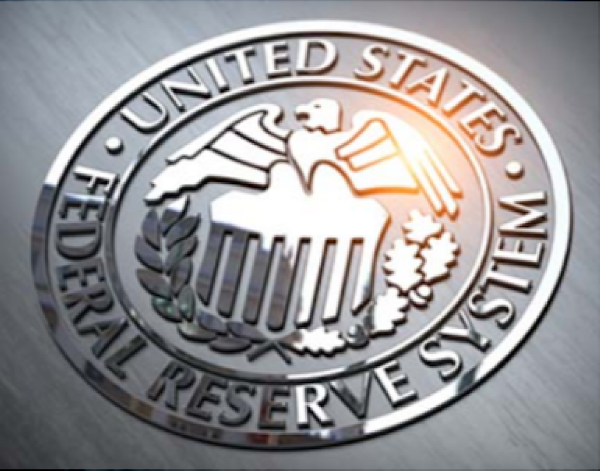


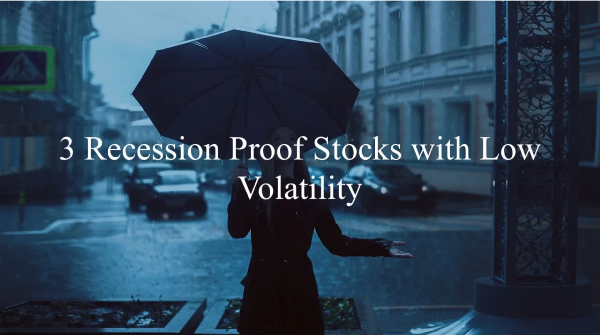

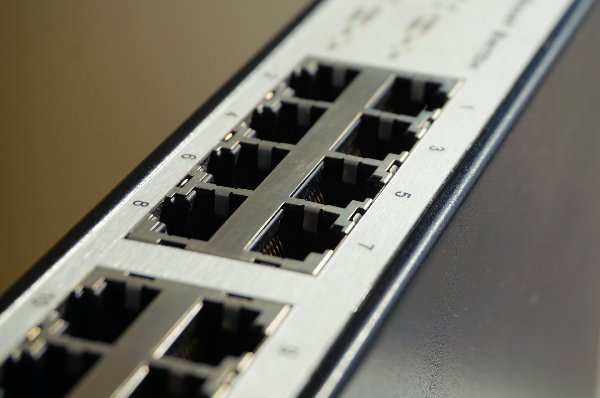



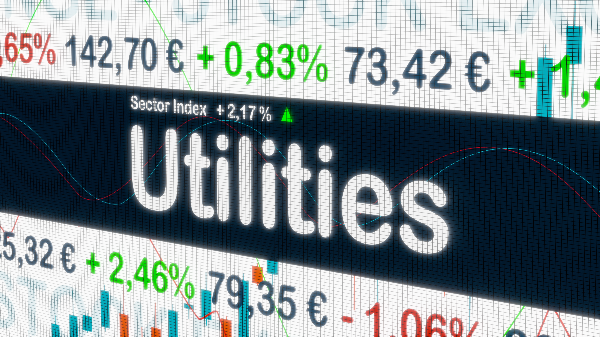






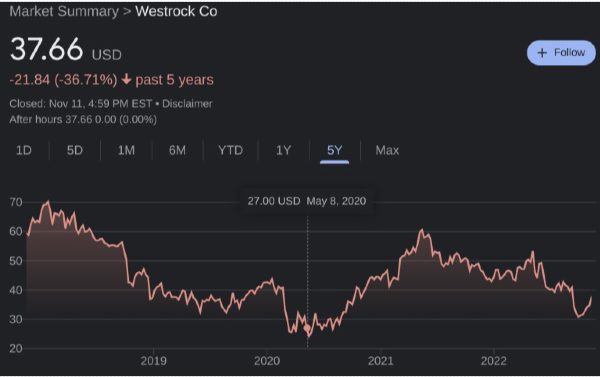

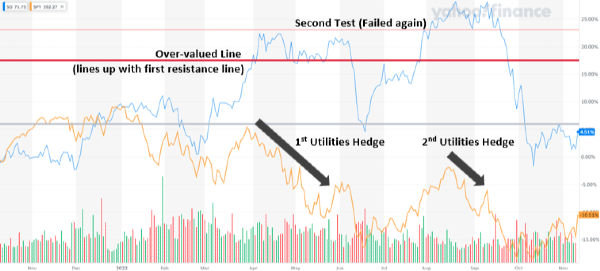


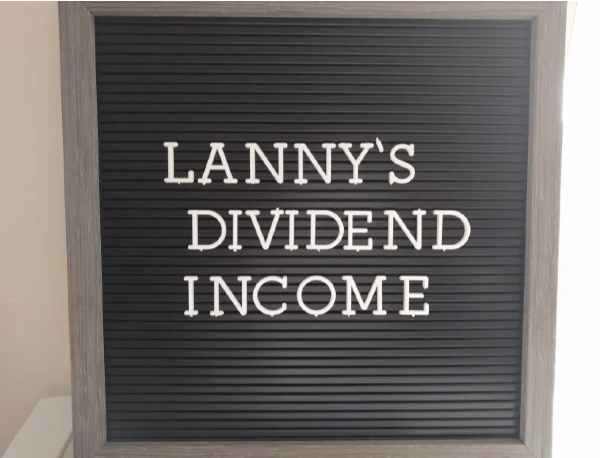








Overview: The softer than expected US CPI drove the dollar and interest rates lower, while igniting strong advances in equities, risk assets, commodities, and gold. Calmer market conditions are prevailing today, and we suspect that in the run-up to the FOMC meeting, a broadly consolidative tone will emerge. The dollar is mostly softer, but within yesterday’s ranges. Only the New Zealand and Canadian dollars among the G10 currencies are softer. Emerging market currencies are generally firmer, led by the recovery of the Hungarian forint on the political deal struck yesterday. The Mexican peso and Turkish lira are the exceptions. Asia Pacific equities generally rose, led by Taiwan and South Korea. Europe’s Stoxx 600 is cutting yesterday’s 1.3% gain nearly in half, while US futures are also a little softer after yesterday’s big run-up. European bonds are selling off and yield are mostly 5-9 bp higher. Sweden’s benchmark has jumped 15 bp after a 1% jump in its CPI. UK Gilts are outperforming, up a single basis point on lower-than-expected CPI figures. The 10-year US Treasury yield is hovering around 3.50%. Gold is consolidating its nearly $30 an ounce rally seen yesterday on falling yields and a weaker dollar. January WTI is advancing for the third consecutive session after falling every day las week. It is pushing a little above $76. US natgas is snapping a five-day rally and giving back all of yesterday’s 5.3% rally. Europe’s natgas benchmark is off 3.8%. Iron ore eked out a small gain after falling for the past two sessions. March copper is extending yesterday’s 1% gain and is up about 0.5% today. March wheat rallied 2.8% on Monday and fell nearly 0.55% yesterday and is off 1.1% today.
Asia Pacific
What can Japan do? The extraordinary monetary policy, maintained in the face of rising prices, continued fiscal stimulus, and a dramatically weaker yen, did not prevent an unexpected contraction in Q3 GDP and, as we learned today, continued deterioration of sentiment among large manufacturers for the fourth consecutive quarterly Tankan survey. Moreover, many economists have picked the yen as their favorite currency next year (which seems to be a mirror image of their bullish calls on US Treasuries). Sentiment among the large manufacturers eased to 7 from 8 in Q3 and the outlook feel to 6 from 9. Among the large non-manufacturers, sentiment improved to 19 from 14, while the outlook was steady at 11. Sentiment among small companies improved. The all-industry capital expenditure plans softer to 19.2% from 21.5%, which was softer the median forecast in Bloomberg survey.
After seemingly securing both the Dutch and Japanese participation in the semiconductor wall around China, the US moved to add another 36 Chinese companies to its blocked list that make it more difficult to secure US technology. China threatens to take its case to the WTO. In the history of statecraft, this looks like a great experiment in trying to cripple a rival by trying to prevent technological progress. Meanwhile, Beijing will stop releasing comprehensive data on new Covid cases. The end of mandatory testing makes the numbers even less meaningful than they may have been before, which were often treated with skepticism. The National Bureau of Statistic has canceled tomorrow's press conference that usually accompany its release of economic indicators but will instead simply post the data its website. The surge in Covid that is taking place will render the data largely irrelevant in any a case. While many banks have revised up their forecasts for the Chinese economy next year, the depth and breadth of the impact of the rapid Covid policy reversal is arguably next to impossible to fathom.
New Zealand's Treasury now concurs with the Reserve Bank of New Zealand that the country is headed for a recession. It sees the economy contracting by 0.8% next year. The recession may begin in Q2 next year and extend into early 2024. The government announced it would extend the gasoline excise discount until February and phasing it out by the end of March. The 50% reduction public transport prices will also be extended to the end of March. The weakening economic growth and high inflation is weakening support for Prime Minister Ardern and the Labour Party, which faces a national election next year.
The dollar was sold to almost JPY134.65 after the softer than expected US CPI yesterday after peaking near JPY138. Its corrective upticks topped out in early Asia near JPY135.75, shy of the JPY136.00 level where about $1.5 bln of options are set that will expire today. The greenback was sold to about JPY134.55 in the European morning. This appears to have exhausted the immediate selling pressure. The month's low, and the lowest level since mid-August was set on December 2 near JPY133.65. The Australian dollar rallied to almost $0.6895 yesterday, its best level since mid-September, stopping a little short of its 200-day moving average that comes in slightly above $0.6900 today. Despite the new turmoil in China, it remains firm today in the upper end of yesterday's range. However, the intraday momentum is stretched, and it looks set to probe lower in North America. Look for initial support in the $0.6820-40 area. A break of $0.6800 may push some of the late longs back to the sidelines. The dollar is softer against the Chinese yuan but within yesterday's CNY6.9370-CNY6.9890 range. Despite the lack of transparency, the yuan currently seems to be shadowing the dollar's broad movement and has strengthened in six of last eight sessions. The PBOC set the dollar's reference rate at CNY6.9535 compared with CNY6.9557 median projection in Bloomberg's survey.
Europe
The UK reported lower than expected November CPI. The 0.4% monthly increase in the headline rate follows a 2.0% jump in October and was lower than the 0.6% median forecast in Bloomberg's survey. The headline rate eased to 10.7% from 11.1% in October. Food and non-alcoholic beverages held up the overall price level. The core rate eased to 6.3% from 6.5%. The BOE meets tomorrow and a 50 bp hike remains the most likely scenario. It would lift the base rate to 3.50%, and the terminal rate is seen around 100 bp higher. Producer prices are typically reported at the same as consumer prices, but a problem is being investigated and the data was postponed. The 10-year breakeven fell for the fifth session and for the eighth time in the past nine sessions. It is a little below 3.55%, and nearly 30 bp decline this month.
The eurozone's October industrial output fell 2.0%, marching the biggest decline of the year. The median forecast in Bloomberg's survey had it falling by 1.5%. A growing divergence of economic performance is becoming evident, and this may become more an issue next year. Germany's industrial output fell by 0.1% in October, while the market expected a 0.6% decline. French industrial production fell by 2.6% and Italy's fell by 1.0%. Spain's contacted by 0.4%. The ECB meets tomorrow and is widely expected to hike its key rates by 50 bp. The Swiss National Bank is also expected to lift its key rate by half of a point, while Norway continues at a quarter-point pace.
The euro jumped to almost $1.0675 yesterday, its best level in six months. Since posting the high, the euro has held above $1.0610, and today's low is about $1.0620. The next immediate hurdle if $1.07, where 1.24 bln euros in options is struck that expire today. It is bumping along session highs in Europe (nearly $10.670), but the intraday momentum indicators are stretched, and a more cautious tone is like in North America ahead of the outcome of the FOMC meeting. Sterling rose almost two cents to $1.2445 yesterday, its best level since early June. It has subsequently found support near $1.2340 and its trading near $1.24 in the European morning. The $1.25 level is the next hurdle, but like the euro, the intraday momentum indicators are stretched and a more cautious trading in likely before the FOMC meeting.
America
The lower-than-expected US CPI was worth about 24 bp on the US two-year yield at its best. On November 10, the previous CPI report, the two-year yield tumbled nearly 25 bp, after falling 15 bp in the previous two sessions. The yield fell to around 4.13% this time, its lowest early October. In his talk at Brookings Institute at the end of November, Fed Chair Powell did not push hard against the easing of financial conditions that had taken place since the Fed met at the start of the month. After yesterday's CPI print, the market is more confident that the peak in rates comes in Q1 23 and is pricing in more cuts by the end of next year. Specifically, the implied yield of the June 23 Fed funds futures contracts about 11 bp more than the March 23 contract, this is the least since the end of October. It peaked on November 21 at almost 25 bp. The implied yield of the December 23 contract fell to 35 bp below the implied yield of the September 23 contract, taking out the mid-November peak. It settled at 32 bp. Most measures of the yield curve, including Powell's preferred measure of the three-month bills and the 18-month forward are inverted, even if not quite as much as they have been. Meanwhile, the Atlanta's Fed GDPNow tracker see Q4 growth above trend at 3.2% and the model will update Thursday. The jobs market is slowing but the 241k three-month average of nonfarm payrolls is still strong in nearly any normal context.
This is the backdrop for today's FOMC meeting. The main issue is not about the 50 bp hike, which seems to be as done of a deal as these things get, but the forward guidance around it. Will Powell push against the easing of financial conditions or instead will he allow the market to do the heavy lifting that some think can still avoid a recession while maintaining its anti-inflation credibility? Can the Summary of Economic Projections converge with market views without the Fed being accused of being a slave to the markets? The market sees the terminal rate of Fed funds between 4.75% and 5.00%, currently about 4.80%. In September, the median dot had it at 4.60%. Can the Fed tell the market something it does not already know? Lastly, a word of caution. The market has a proclivity to respond one way to the FOMC statement and to reverse itself during Powell's press conference, making for extremely volatile trading.
The US dollar fell to a six-day low against the Canadian dollar yesterday near CAD1.3520. Still, the Canadian dollar continued its underperformance, and its 0.67% gain was the least among the G10. Today, it is one of two major currencies that are lower than the dollar today, joining the New Zealand dollar. A break of CAD1.35 would signal the next leg down, but we are inclined to see a move above CAD1.3580 into the CAD1.3600-20 range. The greenback fell to almost MXN19.50 yesterday, also a six-day low. It settled on its lows but there has been no follow-through selling of note. There may be potential toward back toward the MXN19.60-65 range.
Originally Posted on marctomarket.com